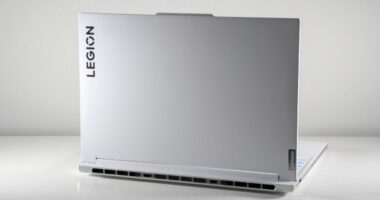When it comes to sleek, powerful, and portable laptops, two names dominate the conversation — Apple’s MacBook Air and the growing family of Windows Ultrabooks from brands like Dell, ASUS, HP, and Lenovo.
As technology advances in 2025, the choice between the MacBook Air (M3) and the latest Intel or AMD-powered Windows Ultrabooks has become tougher than ever. Both categories offer impressive performance, battery life, and design. But which one is better for you?
Let’s compare their design, performance, ecosystem, battery life, and value to help you make the right choice.
Design and Build Quality
Apple’s MacBook Air has always been the gold standard for minimalist design and premium build quality. The 2025 model continues this legacy with an all-aluminum chassis, razor-thin profile, and a weight of just 2.7 pounds. The MacBook Air’s unibody construction gives it incredible rigidity and a sleek, elegant look that feels luxurious in the hand.
Windows Ultrabooks, however, have caught up quickly. Models like the Dell XPS 13 Plus, ASUS Zenbook S13, and HP Spectre x360 14 feature aerospace-grade aluminum, carbon fiber, or magnesium alloy frames. Many now offer 2-in-1 flexibility, touchscreens, and even OLED displays — something the MacBook Air still lacks.
Verdict:
-
MacBook Air: Sleek and consistent design, ultra-lightweight.
-
Windows Ultrabooks: More design variety, touchscreen and convertible options.
Winner: Tie – depends on your style preference.
Display Quality
The MacBook Air M3 features a Liquid Retina display with 2560×1664 resolution, excellent color accuracy, and True Tone technology. The brightness reaches up to 500 nits, making it great for photo editing, streaming, or working outdoors.
Meanwhile, premium Windows Ultrabooks go a step further. Laptops like the ASUS Zenbook OLED or Dell XPS 13 Plus offer 4K OLED or 3K touch displays with deeper blacks, higher contrast, and even HDR support. Some models also provide 120Hz refresh rates for smoother animations.
Verdict:
-
MacBook Air: Stunning color accuracy, consistent calibration.
-
Windows Ultrabooks: Brighter OLED panels, touch and HDR support.
Winner: Windows Ultrabooks.
Performance and Power
In 2025, the MacBook Air M3 chip has reached impressive efficiency levels. With up to 8 CPU cores and 10 GPU cores, it delivers smooth performance for tasks like 4K video editing, programming, and light gaming. Apple’s optimization between hardware and software ensures stable and consistent performance, even without fans.
Windows Ultrabooks now ship with Intel Core Ultra (Meteor Lake) or AMD Ryzen 7 8845HS processors, which include integrated NPUs for AI acceleration. Some models also feature discrete GPUs like the NVIDIA GeForce RTX 3050/4050, giving them a clear edge in gaming and heavy 3D workloads.
Verdict:
-
MacBook Air: Silent, cool, and efficient for daily productivity and media work.
-
Windows Ultrabooks: Better for gaming, multitasking, and hardware-intensive tasks.
Winner: Windows Ultrabooks for power users; MacBook Air for balanced performance.
Operating System and Ecosystem
This is where preferences become very personal.
macOS Sonoma offers a smooth, secure, and intuitive experience. It integrates perfectly with the Apple ecosystem — iPhone, iPad, Apple Watch, and iCloud — allowing features like Handoff, AirDrop, and Universal Clipboard. If you’re already in Apple’s ecosystem, the MacBook Air fits seamlessly.
Windows 11, on the other hand, provides far greater flexibility. It supports a wider range of software, including custom apps, games, and open-source tools. Windows Ultrabooks also come with AI features via Copilot+, native touch support, and better file management systems for business users.
Verdict:
-
MacBook Air: Best for Apple users and creatives using Final Cut, Logic Pro, etc.
-
Windows Ultrabooks: Ideal for professionals, gamers, and those who need flexibility.
Winner: Depends on your workflow.
Battery Life and Efficiency
Apple’s M3 MacBook Air leads the industry in power efficiency. With up to 18 hours of battery life, it easily lasts a full workday — even with heavy multitasking or video streaming.
Windows Ultrabooks have made huge progress thanks to Intel’s new Core Ultra chips and AMD’s Ryzen AI processors, both featuring efficient NPUs. However, depending on display type (especially OLED or 4K), battery life can range from 8 to 14 hours.
Verdict:
-
MacBook Air: Consistent all-day battery.
-
Windows Ultrabooks: Decent, but varies by model and configuration.
Winner: MacBook Air.
Keyboard, Trackpad, and Ports
The MacBook Air has arguably the best keyboard and trackpad combo in any laptop. Apple’s Magic Keyboard offers deep, quiet key travel, and the Force Touch trackpad is large, responsive, and precise.
Windows Ultrabooks vary — some, like the HP Spectre x360, have superb keyboards and touchpads, while others are average. However, Ultrabooks usually offer more ports, including USB-A, HDMI, and SD card readers, whereas the MacBook Air is limited to two Thunderbolt 4 ports and a MagSafe charger.
Verdict:
-
MacBook Air: Superior typing and trackpad experience.
-
Windows Ultrabooks: More connectivity options.
Winner: Tie.
Price and Value
Price plays a big role in decision-making.
The MacBook Air M3 starts around $1,099 for the base model, while premium configurations can reach $1,499 or higher. Windows Ultrabooks vary widely — you can find excellent options like the ASUS Zenbook 14 OLED or HP Envy x360 starting at $899, while flagship models such as the Dell XPS 13 Plus or Surface Laptop 7 can exceed $1,500.
In terms of value, Windows Ultrabooks often give you more features for less money — touchscreens, 2-in-1 versatility, higher resolutions, and more ports. However, MacBook Air’s resale value and longevity make it a smarter long-term investment.
Verdict:
-
MacBook Air: Higher upfront cost, but long lifespan.
-
Windows Ultrabooks: More options and better value upfront.
Winner: Windows Ultrabooks for affordability; MacBook Air for longevity.
Who Should Buy Which?
Here’s a simple breakdown to help you decide:
Choose MacBook Air if you:
-
Already use iPhone, iPad, or other Apple devices.
-
Prioritize battery life, silent operation, and minimal maintenance.
-
Work with creative software like Final Cut Pro or Logic Pro.
-
Want a durable laptop that holds its value over time.
Choose a Windows Ultrabook if you:
-
Need touchscreen or 2-in-1 flexibility.
-
Use apps or tools only available on Windows.
-
Do gaming, 3D design, or AI-driven workloads.
-
Want more choices in specs, design, and price.
Final Verdict: The Best Laptop Depends on You
So, MacBook Air or Windows Ultrabook — which is better?
There’s no single winner. The MacBook Air (M3) is unmatched in efficiency, build quality, and integration within Apple’s ecosystem. It’s perfect for students, professionals, and creators who want simplicity and reliability.
However, Windows Ultrabooks win when it comes to flexibility, display options, performance customization, and affordability. They cater to users who value hardware versatility and wider software support.
In 2025, both are excellent choices — it all depends on what you need most: the simplicity and polish of macOS, or the power and flexibility of Windows.









